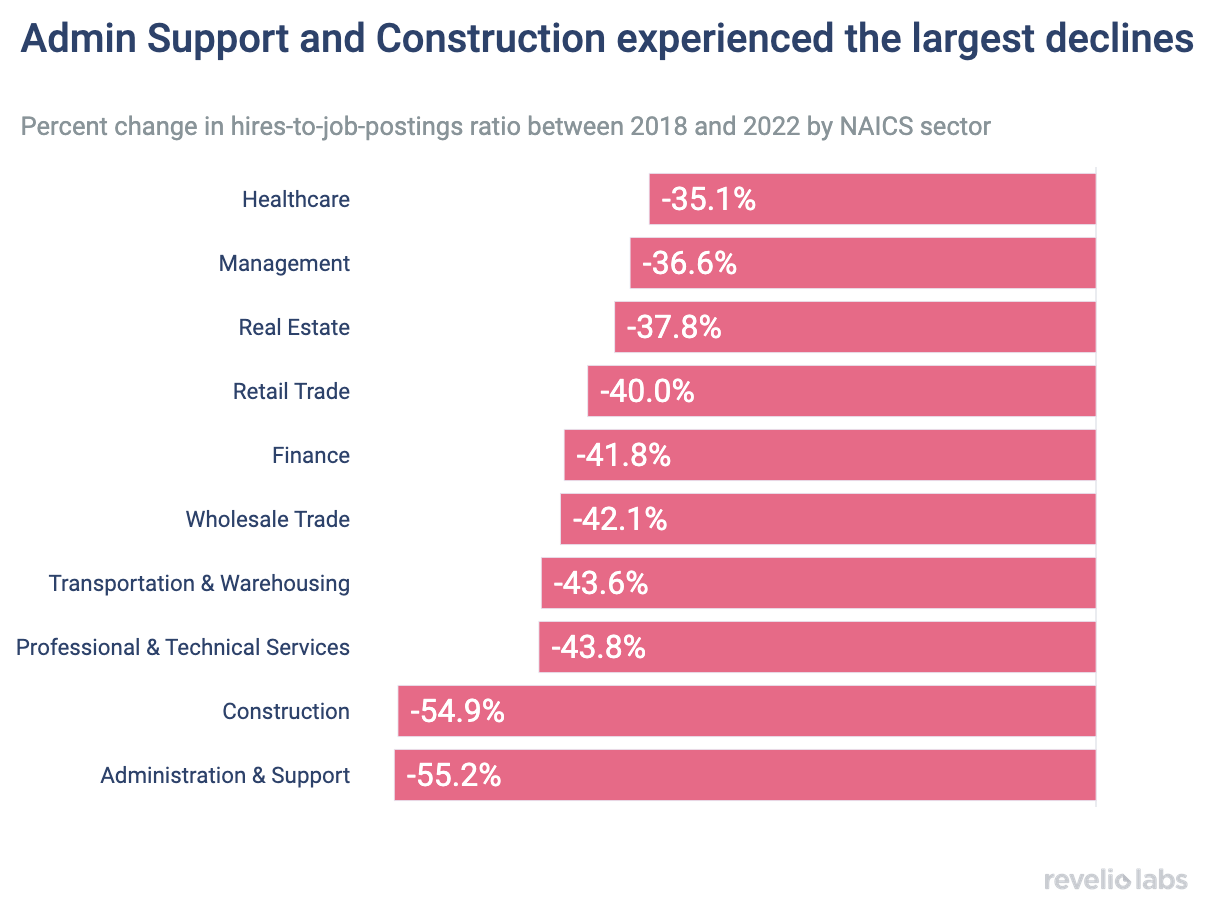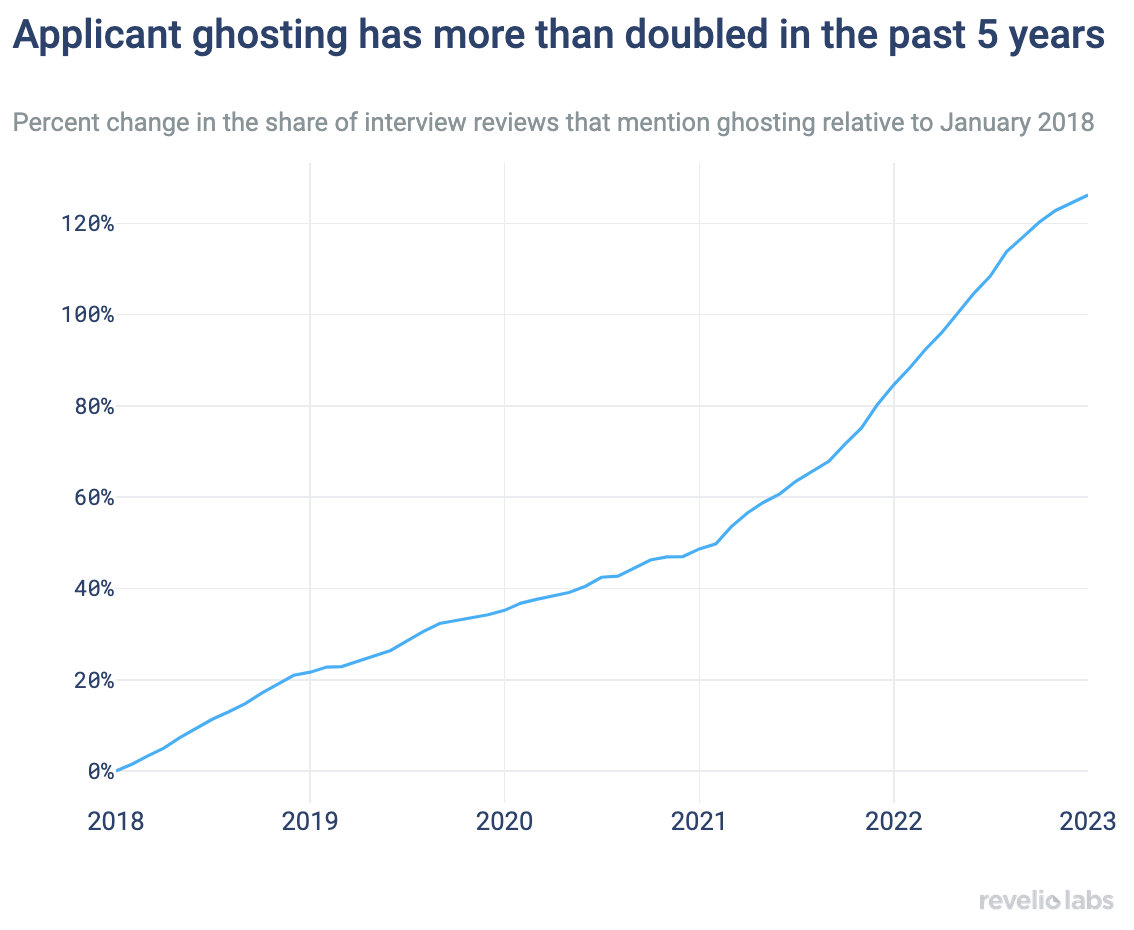Ghost Job Postings 👻
Who you gonna call? Re-velio!

The US labor market has experienced a sharp decline in the number of hires per job posting, bringing into question whether job postings are a reliable metric for the state of the labor market.
Applicants are reporting increasing rates of being ghosted by recruiters.
The phenomenon seems to be the result of a combination of factors: a still-tight labor market coupled with increased economic uncertainty and changes in interview etiquette post-Covid.
Are online job postings still a good metric of job openings? While job postings are a great forward-looking indicator for companies' talent strategies and product focus, they can paint an incomplete picture of the health of the labor market as an aggregate metric. In Revelio Labs' collaboration with Bloomberg, we combined job postings with hiring data. We can match job postings to new positions that started within 6 months of the posting date on company, role, seniority level, and state.
Using our data analytics tools, we find that the US labor market has experienced a sharp decline in the number of hires per job posting, starting in 2020 and accelerating throughout 2022. The ratio of hires per job posting has now dropped from 0.75 hires per open job posting in 2018 to below 0.5 hires in 2023, meaning that only every other job posting results in an actual hire!


A falling hires-to-job-postings ratio can have many reasons. The most obvious one is a labor shortage that results in companies having trouble finding adequate talent to fill their openings. As a result, job postings get taken down and re-posted without being filled. Another reason may be an increase in economic uncertainty, which results in a slowdown in hiring efforts while the job postings remain active. A more cynical interpretation is that online job postings are cheap and are kept open without a true hiring intention.
Looking at the industries with the biggest decreases in hire-to-job-postings ratio, we see the industries with known labor shortages including Education, Construction, and Healthcare are on the list. However, industries like Management and Finance also make an appearance. They aren't prone to labor shortage issues, suggesting some of the latter factors may be contributing to the decreasing hires-to-job-postings ratio.


Sign up for our newsletter
Our weekly data driven newsletter provides in-depth analysis of workforce trends and news, delivered straight to your inbox!
Using interview ratings, in which candidates provide feedback on their experience with companies' hiring processes, Revelio Labs looks at the number of mentions of candidates being "ghosted" by recruiters. As anyone who has ever applied for a job knows, recruiter ghosting can be a daunting experience for job seekers. We see with our data analytics tools that the share of interview reviews mentioning recruiter ghosting has increased by 120% over the past 5 years.


This increase in the incidence of applicants being ghosted gives some indication that the falling hires-to-job-postings ratio is not entirely due to labor shortages. When applicants are few and far between, recruiters are less likely to ghost them, even if they don't meet the criteria. What seems to be happening, especially in the post-COVID era, is that many employers have become more lax with their hiring and interview etiquette.
In conclusion, ghost job postings seem to be a result of a combination of factors: a tight labor market, increased economic uncertainty, and post-pandemic changes in interview etiquette.

